Trade shows and live events are as popular as ever and for good reason. In-person connections remain one of the most powerful ways to spark meaningful business relationships. But events are expensive. How do you make sure your investment delivers real results in the form of high-quality meetings with new prospects and directly drives pipeline growth? One of our go-to experts in this space is Terri-Lynne Anderson, Director of Business Development, who consistently exceeds goals by turning event engagement into revenue opportunities for our clients. In our new blog, Terri-Lynne shares her approach to maximizing event value before, during, and after the show.
.png?width=940&height=788&name=TLA%20Warm%20Leads%20(1).png)
Q: Why do you see events as a valuable tool in a sales development strategy, especially today?
Terri-Lynne: Events give us a warmer path into a conversation. Even for pre-event outreach, it’s easier to start a dialogue when you’re referring to a shared experience of an upcoming event. It’s not just another cold call—it’s a call with context.
The outreach you make must be relevant to your prospect. Here are some examples:
Your messaging should make it clear that you're not just asking for their time, you’re offering something useful, timely, and relevant in return.
And every event must be tied to a measurable strategy, namely, booked meetings, and next steps in the sales funnel.
Q: How do you build a quality prospect list for an event?
Our clients sometimes provide a list of target accounts or event attendees. From there, our data managers (shoutout to Allison Nakagawa and Peter DeBartolo) use a mix of traditional research and AI tools to build out the list. These practices help uncover intent signals and prioritize the prospects most likely to engage. Their research findings help me create personalized messaging that builds trust and increases the prospect's likelihood of scheduling a meeting.
If the client doesn’t have a list of event attendees - which is often the case - that's when our data managers really get creative. If the client has attended the event in previous years, they start by referencing past attendee lists to identify companies and then add contacts who match our target titles.
They also look at speaker and sponsor lists, knowing that representatives from those companies are likely to attend. They can also create a profile of ideal attendees based on the type of event, factoring in likely job titles, industries, and even geographic proximity to the venue. This allows us to build a list of individuals who are most likely to be there.
And if we find out they aren't planning to attend, we've still made a warm connection and can offer the prospect an opportunity to meet one-on-one to hear directly from our client about new services or technology they are going to be showcasing at the event.
Q: What messaging works best for getting pre-event meetings?
I have found success starting with a phone call, mentioning the event directly, and following up with a personalized email that is very similar to the voice message I left. The subject line references the event, which I have found boosts our response rates. Once contact is made, I’ll introduce the client and suggest that we coordinate moving forward by text, which can be invaluable when logistics get tricky on the day of the event. I send a reminder the day before and confirm all meeting details. It’s all about making it as easy as possible to connect.
Q: How do AI tools support your outreach?
I lean on AI to help personalize my messaging at scale. That includes crafting call frameworks, emails, pulling in relevant buzzwords, and identifying points of connection. It’s not about automating the message, it’s about enhancing it.
Q: When should you start your outreach?
Ideally, outreach should begin two to four weeks before the event. That said, some of the best engagement occurs just before or even during the show, when people are aware of their schedules and actively thinking about the event.
Q: What’s your role while the event is in progress?
It’s definitely not a “set it and forget it” situation. I stay in touch with clients throughout the event. I confirm meetings, problem-solve last-minute changes, and ensure that attendees and our clients connect, even if someone is running late. After each meeting, I follow up to capture feedback and determine next steps.
Q: Do you coordinate with internal teams at the event?
Absolutely. I stay in close touch with our client teams (often by text) for real-time updates, rescheduling, or feedback. That collaboration is key to keeping everything running smoothly.
.png?width=940&height=788&name=Lara%20re%20Events%20(2).png)
Q: What does your post-event follow-up process look like?
Post-event follow-up is where a lot of the magic happens. I continue reaching out to anyone we couldn’t connect with on-site. The event is still a relevant and timely reason to reach out, even after it’s over. Sometimes I’m still booking meetings weeks later with people who didn’t attend or couldn’t schedule during the show.
Additionally, we never overlook those who were unable to attend the event. Those are still warm leads. If the client wants to run a re-engagement campaign, I jump right back in.
.png?width=940&height=788&name=Mary%20Accelerate%20Warm%20Leads%20(4).png)
Q: Can you share any success stories where this approach delivered results?
We’ve had several wins recently. One client saw great traction. Conversations that started at the event (or even before) have already moved down the funnel. Another client had multiple meetings that quickly progressed to pipeline opportunities.
 Exceeding Forecasted Goal by 25%
Exceeding Forecasted Goal by 25% We conducted pre- and post-event outreach for a major industry trade show, and the results were better than anticipated. We exceeded the forecasted goal by 25% by pre-booking meetings to happen onsite at the show, as well as pre- and post-show meetings, for a total of 20 highly qualified prospects with the top target accounts in our client's market. Less than 30 days later, two of these qualified prospects have already gone to proposal, and four more are progressing quickly, with two of them being potential whales in their space.
Q: What would you say to someone who doubts the value of live events in today’s landscape?
Live events are 100% back. Even in our digital world, nothing replaces face-to-face interactions. If someone is at an event, they’re already in a mindset to learn and explore. That’s an opportunity you don’t want to waste.
Events are one of the best opportunities to get in front of high-value prospects. But showing up isn’t enough. The key is to approach them with a strategic plan and disciplined follow-through.
If you need help making your next event as productive as possible, reach out. We’d be happy to help you develop an effective trade show strategy.




